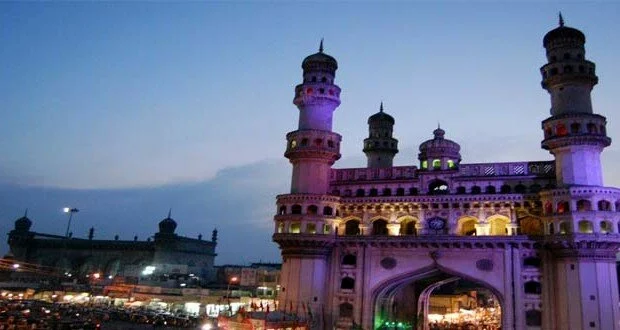How Char Minar Was Made Beautiful?
The original monument of Charminar was originally a simple, but tall structure with four long minarets. Over the centuries, it underwent several changes that added more beauty to the historic structure.
One of the minarets of this historic monument is not original. After the extinction of the Qutb Shahi dynasty, during the Subedarship of Bahadur Dil Khan, the south-western minaret of Char Minar fell to pieces by the effect of lightning. The historians say that the minaret was repaired with much pain and an amount of Rs 60,000 was spent for the same. Therefore, one can say that one of the minarets, the one facing Mecca Masjid, is not original. It may be interesting to note that the same minaret fell victim to the growing vehicular pollution around the monument. Compared to other parts of the structure, the South-West minaret suffered immense damage in the last few decades.
The pastering of entire Charminar was done in 1258 AH (1824 ad) at a cost of Rs one lakh during the reign of third Nizam Nawab Nasirud Dowlah Bahadur, Ghufran Manzil. These works turned Charminar into one of the largest stucco masterpieces in India. The ornamentation seen on the monument was done during that year. Although the monument was built in the Qutub Shahi style, the entire stucco designing was done in the Asaf Jahi style. Similar ornamentation is seen in the Paigah tombs which were constructed in the 1780s. Specialised workers were given the task of stucco work and the entire replastering and ornamentation took about four months in 1824.
A guard of Afghan City Police was stationed at the Charminar in 1302 AH (1884 AD).
Two years later, on the occasion of the visit of Lord Dufferin, Viceroy of India, to Hyderabad, iron railings were fixed around Charminar with a gate on the northern side. The four clocks were fixed on the second storey of the monument in 1889 AD.
 INN Live Urdu News Channel – India Breaking News, Headlines, Hyderabad اردو خبریں
INN Live Urdu News Channel – India Breaking News, Headlines, Hyderabad اردو خبریں